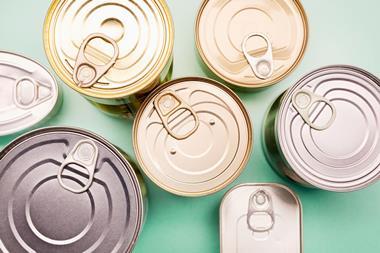Chemists mimic the natural shape-shifting abilities of biological tissues using a half-tone printing technique on a polymer
Polymer chemists have successfully emulated the natural shape-shifting abilities of biological tissues, which could allow them to develop a new range of functional materials that change shape reversibly in response to particular stimuli. Such materials would have applications in areas as diverse as biomedicine, robotics, tuneable micro-optics and tissue engineering.
Ryan Hayward and colleagues at the University of Massachusetts, Amherst, US, have developed thin layers of a polymer gel material that can be selectively treated using ultraviolet light and photo-masks in a process called ’halftone gel lithography’ to mould the material into specific shapes, such as saddles, caps and cones. The technique could be used to create polymer scaffolds for tissue engineering and other applications.

Researchers have spent many years trying to find ways to make artificial muscles and self-actuating materials that transform between different shapes - like the beating heart of an octopus - with the aim of developing artificial ’soft machines’. Materials including patterned gels, electroactive polymers, photosensitive liquid crystal elastomers, dielectric elastomers, shape memory polymers and others have been investigated over the years. The team reasoned that using a polymer within which cross-linking can be tuned using ultraviolet light would allow them to pattern the material to produce a wide variety of three-dimensional structures. Moreover, if they chose the right polymer the process would be reversible.
The team focused on poly(N-isopropylacrylamide) copolymers containing pendant benzophenone units. The benzophenone groups allow cross-links to be formed between polymer chains that are readily tuned by the dose of incident ultraviolet irradiation. By using two photo-masks to create patterns of dots, the team was then able to control the pattern of irradiation on a thin layer of this polymer. Fully exposed regions showed limited photo-swelling when placed in water, while partially masked areas swelled to a greater extent. The process is akin to printing a halftone image in a newspaper where the patterns of ink dots produce an image that looks smooth and realistic to the naked eye.

Using this technique and the ’halftone’ effect of two masks working together, the team was able to make continuous, smooth surfaces with a controlled Gaussian curvature from a flat polymer matrix. They could also create almost closed shapes, open capsules and more sophisticated Enneper’s minimal surfaces. Ultimately, such a process of masked exposure should allow amost any three-dimensional surface to be produced by the swollen gels.
’The work is truly ground-breaking and sets out the design rules for producing complex three-dimensional shapes from materials based on soft matter,’ Paul Topham of Aston University, UK, tells Chemistry World. ’The work by Hayward and colleagues takes considerable steps towards allowing us to replicate the 3D geometries required from a vast toolkit of stimuli-responsive polymers.’
David Bradley
References
J Kim et al Science, 2012, DOI: 10.1126/science.1215309






No comments yet